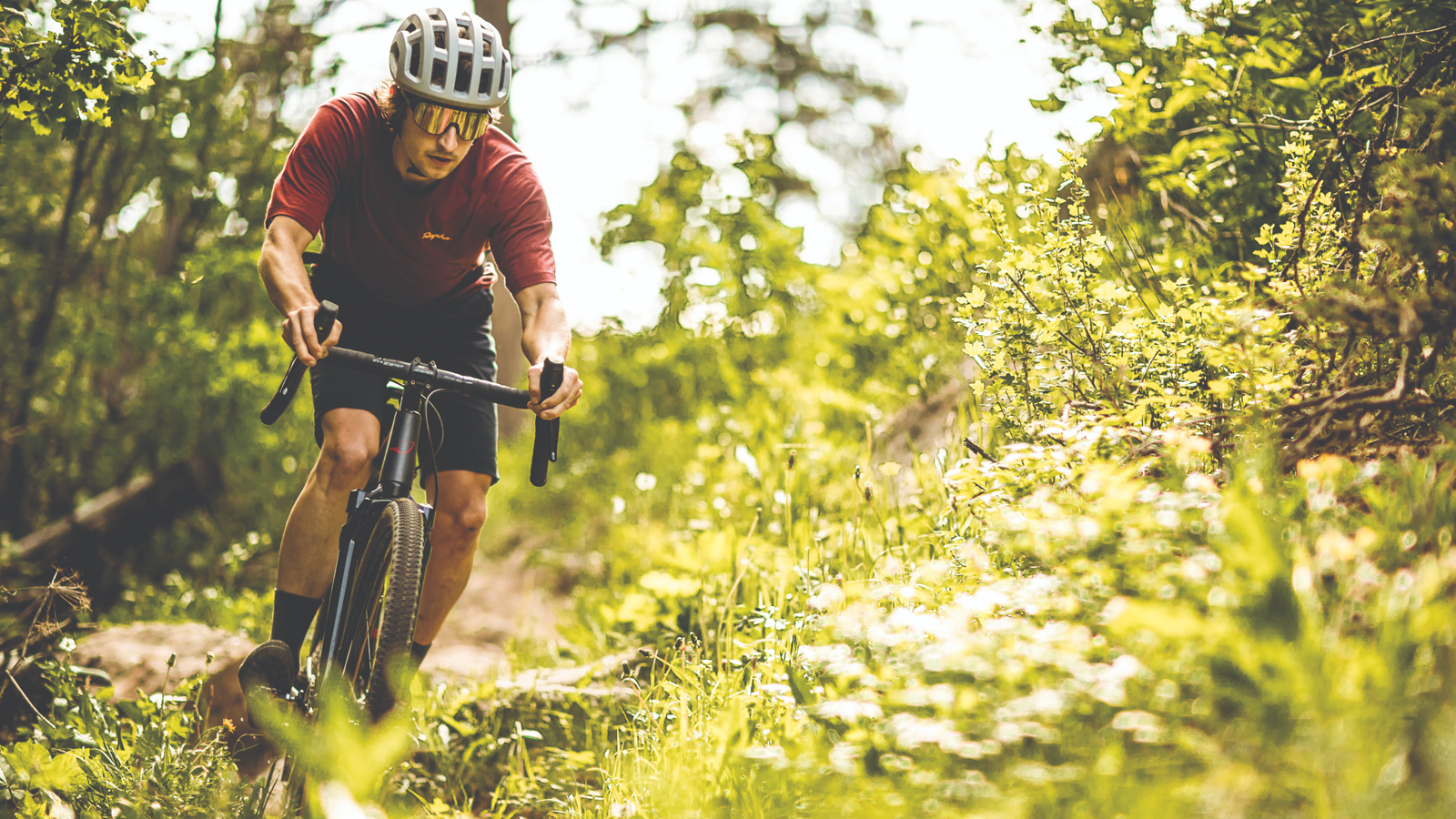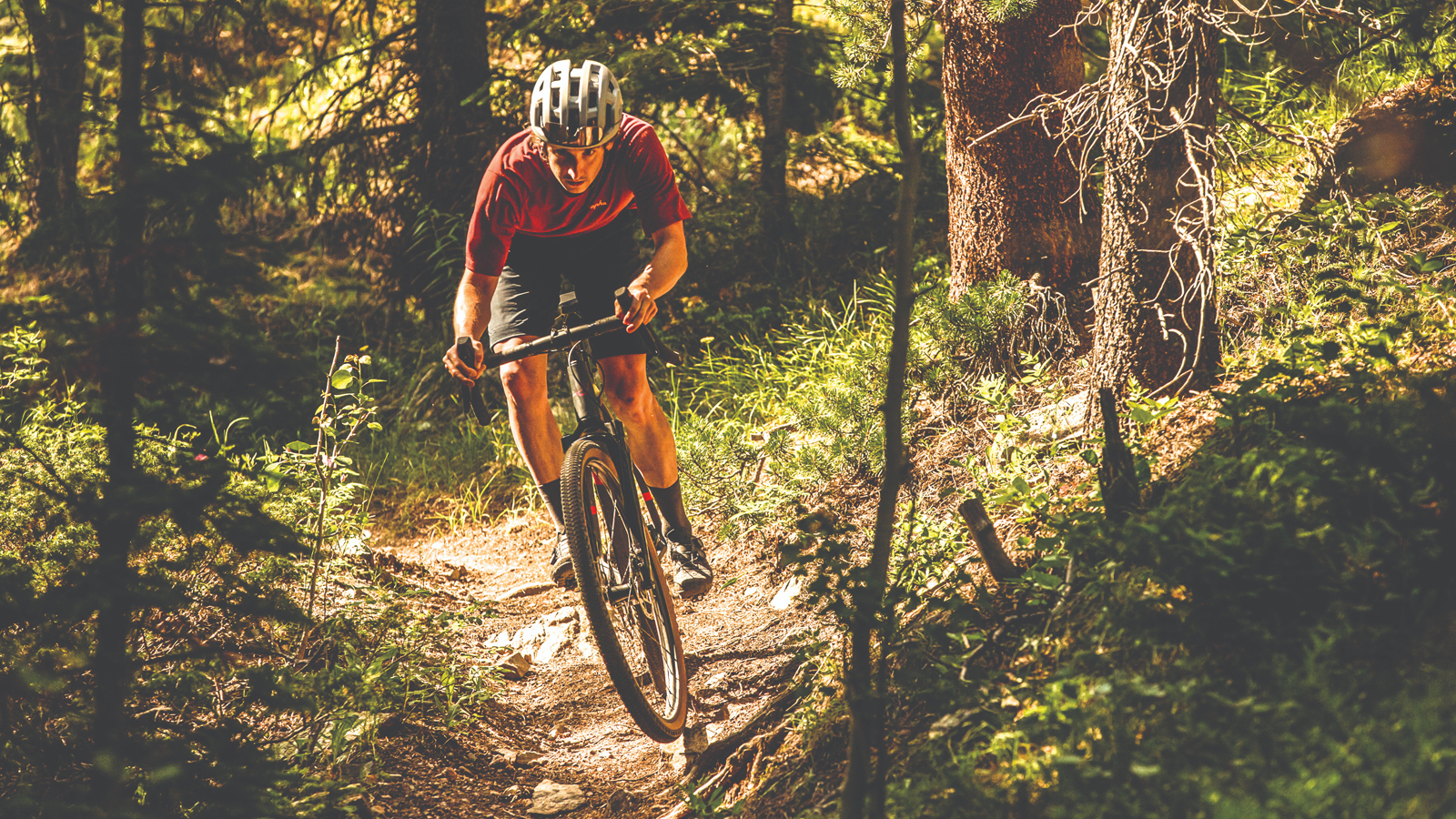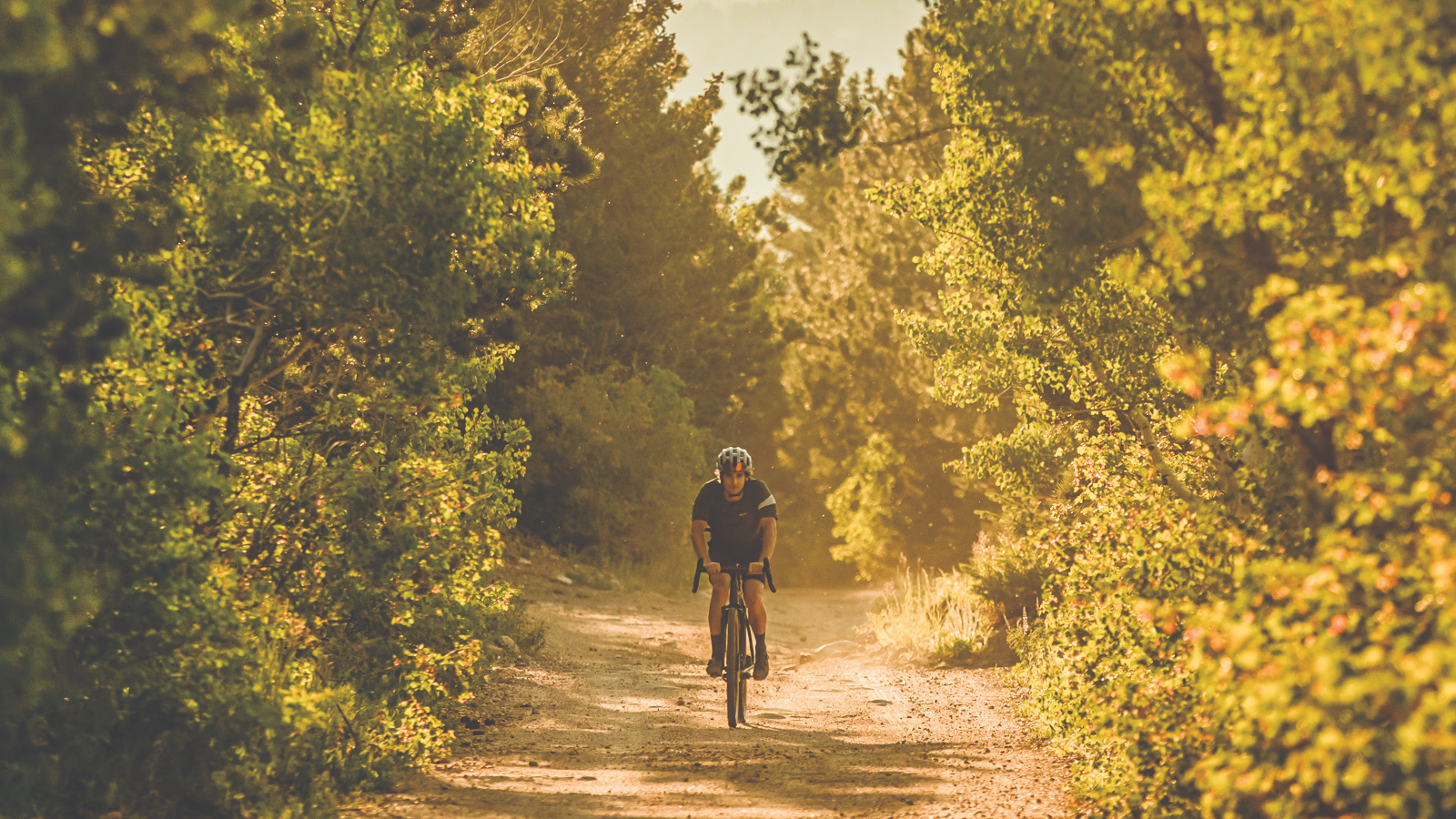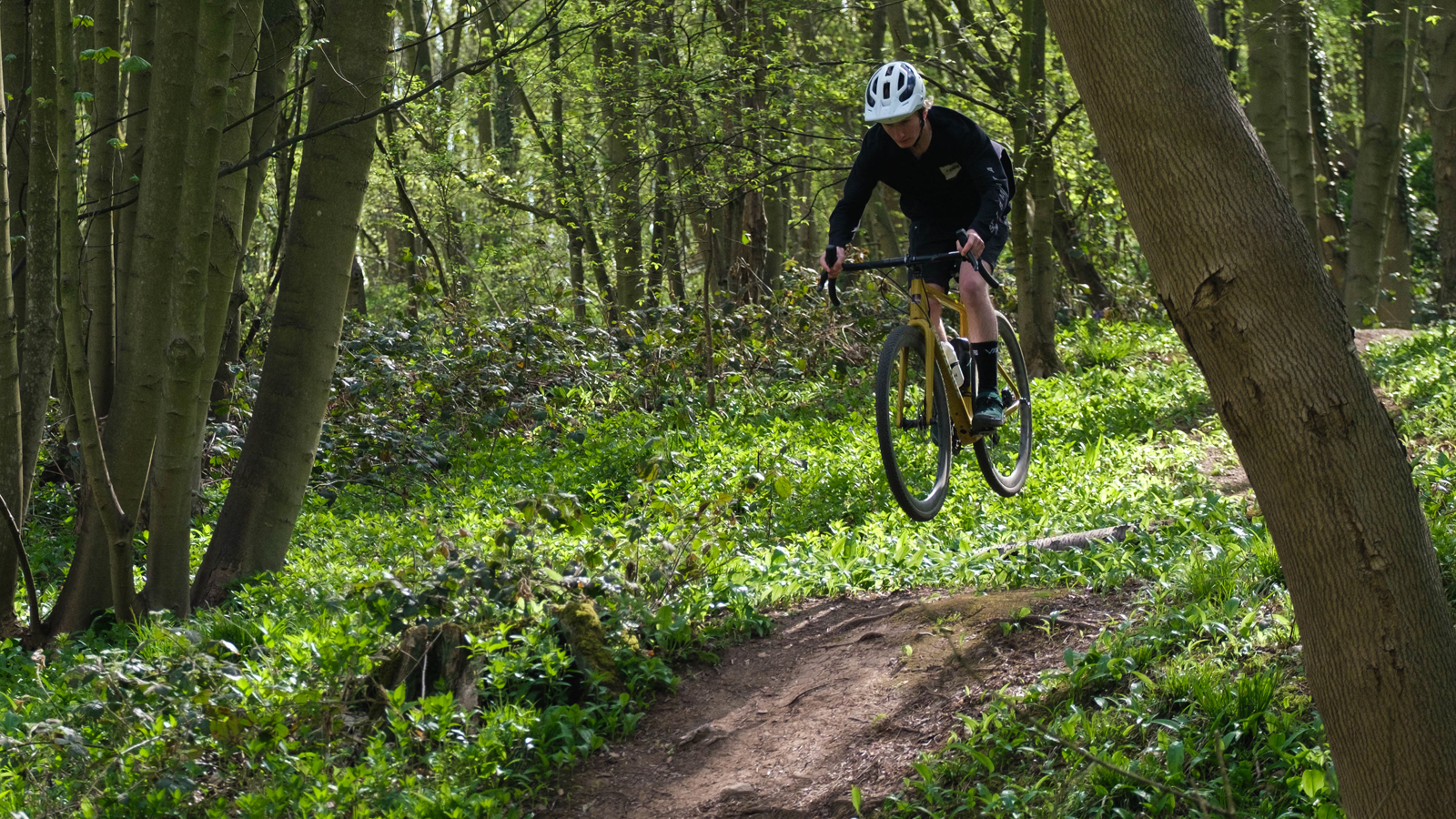Bespoken Word: Is rad gravel the vegan bacon of biking?
SRAM’s new XPLR group is the big brand confirmation that gravel is getting even closer to MTB. But is ‘progressive gravel’ the vegan bacon of biking and if it is, does it matter?

Vegan bacon might seem an odd comparison, but the introduction of XPLR - and particularly the 30mm travel RockShox Rudy Ultimate XPLR gravel fork - has provoked a similarly outraged response from some people as sliding some rashers of fake bacon - fakon - under the snout of a carnivore.
And to be fair, it's easy to see why on a straight-up ‘off-road performance’ comparison. Cut to fit the RockShox Rudy is only 70g lighter than the RockShox SID SL Ultimate fork with 100mm of travel. It also uses 32mm (rather than 30mm) stanchions and non tapered lower legs, a 15mm thru-axle and a bigger crown for a stiffer overall structure. SID can straddle 29 x 2.4in tires while Rudy tops out at 700x50mm (roughly 29 x 2in). In other words when it comes to charging hard across rough cross-country trails then the SID is the ‘real bacon’ in terms of control, confidence and comfort.
You can extrapolate that further through the whole gravel bike versus MTB equation too. Those bigger tires mean more grip, better roll-over performance and the ability to drop pressures by almost half to amplify those advantages further. The same ‘clearly better off-road’ observation applies to more relaxed geometry, higher/wider handlebars, longer travel dropper posts and even things like hand position when using the brake and shift levers. And don’t think the best gravel bikes get the trump card for weight here either. The 61mm wide Specialized Renegade S-Works tires I’m running on my custom XCperimental Specialized Chisel build are 590g. That’s within 100g of most of the best gravel tires that come in a decent size. The Roval Control 29 Carbon 29mm internal diameter wheels are only 80g heavier than a set of 25mm internal Zipp 303 Firecrest wheels and if you went for the SL version of the Rovals, they are 170g lighter than the Zipps. You could make the same seemingly head-scratching comparison between MTB and gravel wheels at pretty much any price point too (it’s to do with maximum rim pressure ratings apparently).
Parts like flat XC bars are a lot lighter than drop bars (particularly gravel-focused wide, flared ones) and frame weights are pretty much awash in terms of weight between XC and gravel too. As a result, if I specced the same Reverb AXS XPLR seat post on my alloy framed Chisel hardtail MTB with SRAM GX/Red AXS mash-up, it would be 400g lighter than the carbon-framed Santa Cruz Stigmata gravel bike I’ve got the XPLR Rival gear loaded onto. Yep, you can read that one again, 400g, a pound. And for the record, a 9kg Chisel goes like absolute sh*t off a stick not just off-road but on road too, because fork lockout and holding the bars in the middle ‘for aero’ is a thing.
But here’s where it gets interesting and I get to roll out more vegan/vegetarian vibes. (Probably too many to be honest because just like gravel, I generally don’t know where to stop when it comes to pushing things too far).

And that’s exactly where Rudy comes in because if you’ve got a gravel bike and you want more control than a rigid fork, but you can’t jack up the front end, then it’s absolutely phenomenal. That aggressively progressive 30mm of travel with its super supple start makes a massive difference in keeping the front wheel on the ground and pointing in the right direction when steps, roots and rocks are doing their best to throw you offline. It means you can brake without your eyes coming out of your sockets or your arms exploding and it cruises smoothly over the kind of stutter bumps or tractor track ribs that make you wish you were on a mountain bike. It has adjustable air pressure and proper rebound damping to control the ride character, and it’s shaped so it doesn’t look out of place on a gravel bike. In other words, just like vegan food, things have got a whole lot better since nut roast or blocks of tofu were the only options if you were lucky.
And just like vegan food, XPLR and other gravel tech has only evolved because people were asking for it. As soon as drop bikes stepped outside the masochistic technical restraints of cyclocross regulations and embraced the extra tire space and performance potential disc brakes could bring, people have wanted to push the boundaries more. Tires got tubeless, fatter and grippier on broader rims. Bars got wider, flared and held in shorter stems. Dropper posts were resized to fit the narrower tubes and shorter stacks of gravel bikes and geometry became more rad ready.

And with every step, the more progressive gravel (or monster cross if you remember that) bikes crept closer to overlapping with XC mountain biking. But at the same time, aero profile frames and wheels, bars with loads of hand positions or even full-on TT clip-on aero bars and an explosion of semi-slick, mid-width rubber options meant less rolling/wind resistance and easier speed on-road or off. Streamlined and refined baggage, multiple bottle/gear mounts added cargo capability without compromising off-piste exploring potential. And let’s not forget it’s been an enrichment - not a restriction - of options. If you still want the salad of time trialing, the beans on toast of the Sunday club run, the Vindaloo of DH or the all-day breakfast of enduro, then that’s fine. They’re all still options, but they’re not the only options anymore.
And expanding the appeal of biking is a brilliant thing for all of us. On a direct level, it means more people realizing what it’s like to ride in traffic, worrying about the dangers and wanting to do something about it whether that’s personally, for partners or for kids and grandkids. It puts money in the tills of bike shops and funding the next fancy tech development - whether that’s a gravel fork that really works or a groupset that delivers the gearing sweet spot you’re after without all that pain in the ass cable threading and tweaking.
More riders mean more facilities as more communities and businesses realize what a useful cash crop we are to harvest. It means podcasts about bikepacking on the National Trust website under the noses of the ‘not in my back yard’ brigade. It means country pubs and cafes starved of business by Covid suddenly full of hungry riders delighted to pay a bit extra for nice food and a craft beer.
And just like the Nu-Vegans, gravel bikers are EXACTLY the demographic that advertising or marketing people spout their aspirational adjectives about and tourist boards are gagging to grab armfuls of. They’re not head down road blocking, red-light running ‘lycra louts’. They’re not rad roost surfers blocking forest roads with Fox stickered vans, carving up virgin woodland, worrying wildlife and causing serious landowner/user conflict.

Instead, the whole gravel vibe of savoring the environment and taking a real interest in looking after it and minimizing your eco-impact is another clear parallel between homegrown gravel and veganism/vegetarianism. That National Trust podcast has loads in it about birdwatching. The King Alfred’s Way route is a join the dots of English history that’s been feted everywhere from national TV to the Guardian. The upcoming West Kernow Route mixes both together in a fantastic pedal around Cornwall and areas all over the country are now lining up to try and host the next Cycling UK gravel adventure.
Gravel is potentially the poster child of a socially responsible, inclusive and welcoming world of self-propelled wheeling. Even the public perception and marketed images are of cheery folks in comfortable clothes with enamel dangle mugs that wouldn’t look out of place in an Enid Blyton adventure. Safe space expanders, explorers, hipsters, and empty nesters, not adrenalin addicts fixated on wattage or rad edits. Sociable types that are happy to hold open gates for others, stop and look at views, get selfies with cows and never shout “Strava” at anyone. And - thankfully getting back on track a bit here - is why the limited capability of gravel bikes is great.

If you’re after thrills you can now find them again on tracks that haven’t been a challenge on an MTB since the turn of the century. There’s something about pushing the limit on a fundamentally unsuitable drop-bar bike that’s far more satisfying and rewarding than riding an XC bike that’s far more capable but also clearly a control compromise compared to an enduro bike. In the same way that I don’t expect a plant-based burger to taste like a meat one, I like the fact it still comes with chips, bun and the same selection of sauces.
Crucially for new or just naturally timid riders, there’s no implied need to get rad if you’ve got drop bars though. Even with a suspension fork, flared bars and a dropper post, they’re still a license to get off and push if you’re not sure, rather than a pressure to live up to extreme expectations that many would-be off-roaders tell us can be massively intimidating. Cross-country mountain bikes also synonymise with skinsuits, heart rate monitors, shaved legs and turning every climb into a cardiac supremacy display. Again, hardly the most harmonious and welcoming example to set.
Because the level of challenge is reduced, you don’t need specialist tracks to have an interesting ride, so it unlocks a vast network of potential adventures that can often start right from your door. The underlying road bike DNA and faster/further performance mean it feels more natural to join up off-road sections on road too, opening up even more opportunities and bringing a great riding experience closer for even more people.
I could go on and on raving about various other aspects too. Because there are so many different ways to ride gravel, there’s none of the tribal exclusivity and posturing that you’ll get at a cycling cafe or trailhead either. It really is 'rung what you brung' and if that happens to be a retro touring bike or one of the best cross-country mountain bikes, that’s fine. And yes that does mean you can say ’gravel’ is nothing new it’s just 'rough stuffing' repackaged or mountain biking like it was in the 70s/80s/90s, right down to short travel forks, flex stems and other “they’re not doing that again are they?” ‘innovations’.
But if these crossover bikes hadn’t been established by early adopters and then seized as the next big lifestyle marketing thing, it would be equally as extinct as those aspects of cycling had become. Instead, creating the 'explore and enjoy' zeitgeist that we need to make the most of the current cycling boom could potentially recreate an explosion in the number of people on two wheels, one that we’ve not seen since between the World Wars or the birth of mountain biking.
Or to put it another way, if putting suspension on a gravel bike is indeed like making tastier vegan bacon then what’s your beef? It makes a potentially healthier, more eco-conscious lifestyle choice more enjoyable and more attractive to more people. And while nobody is forcing it down your throat, if you do accidentally cross the line from gravel to MTB, components like XPLR makes it a much better experience than chewing on TVP mince.

Guy Kesteven has been working on Bike Perfect since its launch in 2019. He started writing and testing for bike mags in 1996. Since then he’s written several million words about several thousand test bikes and a ridiculous amount of riding gear. He’s also penned a handful of bike-related books and he reviews MTBs over on YouTube.
Current rides: Cervelo ZFS-5, Specialized Chisel, custom Nicolai enduro tandem, Landescape/Swallow custom gravel tandem
Height: 180cm
Weight: 69kg
